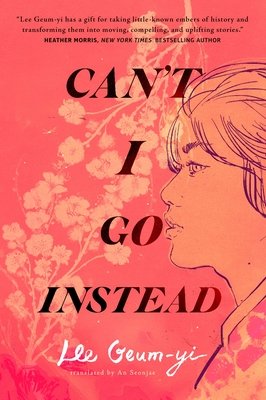Can’t I Go Instead by Lee Geum-yi
Review of Can’t I Go Instead by Lee Geum-yi, translated by An Seonjae
Can’t I Go Instead by Lee Geum-yi, translated by An Seonjae (2023). Published by Forge Books.
So I wish there were some books that I had a grand story behind why I read them. If you’re new here, hi!
This is my digital diary of sorts where I keep track of all of the things I read and watch, and I have a tendency to mainly watch Asian movies and consume books from the region (I define Asia here as broader Asia, so West Asia and Central Asia are included in this definition).
The small story behind me picking this book up was that I was venturing through my local library when I saw this on a stand.
At first, I was confused, as I had no idea this book was out. I typically know what Korean books are in translation, and I had not heard of this one before. But I decided to pick it up because this was an opportunity I couldn’t leave behind.
I ended up reading the book almost immediately, too, which led me to finish the entire thing in one sitting. I stayed up until 2 AM in order to finish this in one go. That’s dedication right right.
Here’s my review before I start rambling too much!
The story of a wealthy Korean girl and her maidservant in colonial Korea and beyond.
Buckle in, because this book is quite the ride. I feel like at times it should’ve been split up because of how the content was flowing through, as the story began to feel like a little too much at times.
Anyways, there are two main characters in this book. Yun Chaeryong is the daughter of a viscount in the colonial period, and he collaborates with the Japanese in order to keep his wealth going despite this being a period in which many Koreans suffered. On Chaeryeong’s birthday, as she turns eight, her father purchases her a maidservant.
Along the journey to pick her up, they meet Sunam, who is seven. Sunam asks “can’t I go instead” as the maidservant selected doesn’t want to do it, and thus that is how Sunam is brought back into the mansion.
Sunam pines for Chaeryeong’s brother, who leaves for Japan to get an education then disappears in the country, presumably he joined the independence movement. As the two girls grow up, it’s soon Chaeryong’s turn to be sent to Japan in order to get an education.
Sunam is brought with her to Japan, where she discovers she has a talent for English, despite having no education or experience.
Chaeryeong falls in love with a guy who doesn’t love her back, and when she gives him money and jewelry, he’s implicated as helping the independence movement, screwing her in the process.
Her father comes to Japan then, and he makes a deal to save his own reputation. He’s going to send Chaeryeong to the Women’s Brigade for the Japanese Army, but then Sunam is convinced to go in her stead.
Chaeryeong assumes a Japanese name and is married to one of his employees, and they head for San Francisco, where they will start a new life in the United States with the guy’s uncle.
Sunam is sent to the Women’s Brigade under Chaeryeong’s name, but it turns out these are comfort women. They are raped by Japanese soldiers, and Sunam is given to an older higher-up man.
She escapes into China, and then finds Chaeryeong’s brother in her journey. They fall in love and get married.
Both women struggle throughout the years, and both end up in America, where they face different forms of isolation and racism. One day they will meet again in South Korea, a country that has become devastated by not only colonialism, but war as well.
This will expose how their stories diverged in incredible ways, but brings them back together despite all of the things that have happened to them.
Overall Thoughts
Obviously I didn’t give all the details of the novel, or we’d be here all day. I though this was such a sweeping novel, but Lee does it in a shorter amount of pages than, say, Pachinko, making it more difficult to flesh out more of the finer points.
I think it needed more space and time to breathe within the story, although I was really captivated by the story and what was happening to these women.
Telling divergent stories through two characters really was brilliant, if not extremely tragic considering what happens to them throughout the novel. Read it if you haven’t already and are interested!
Follow me below on Instagram and Goodreads for more.


![Jeju-do (제주도) is one of those places that reminds you of how stunning the world is
[7.12.2024 부터 7.14.2024 까지]](https://images.squarespace-cdn.com/content/v1/5ea1f794501b7153b29e7cd7/1721033601522-554E76HR01JUHDWZBJ1I/image-asset.jpeg)









